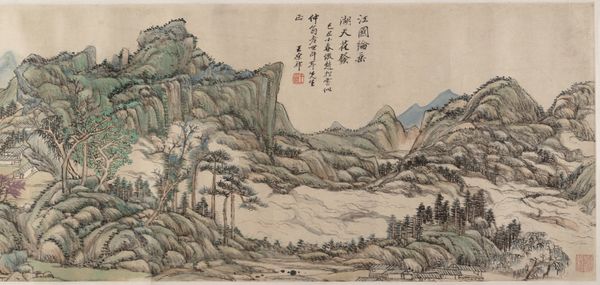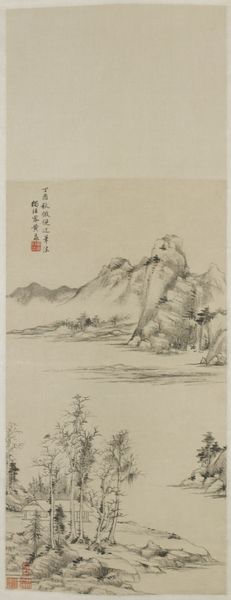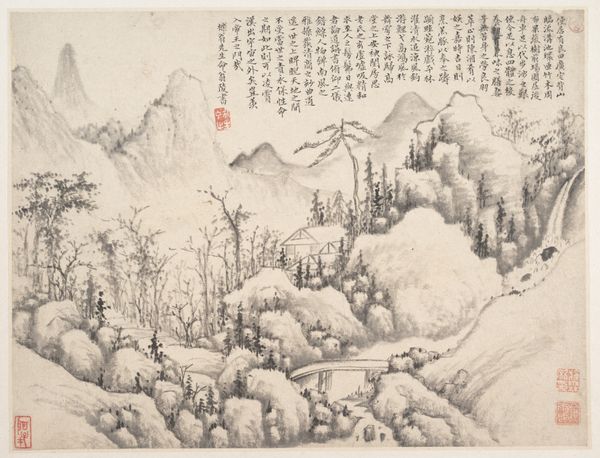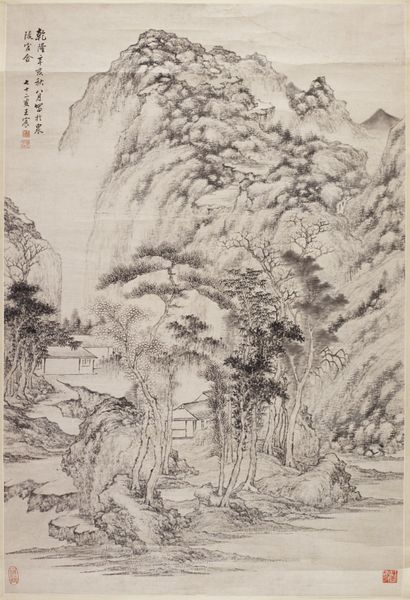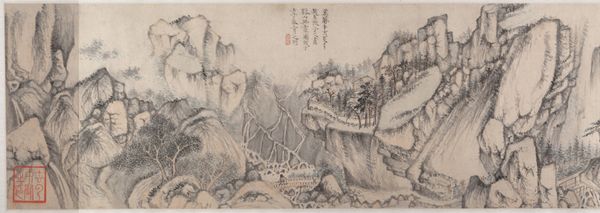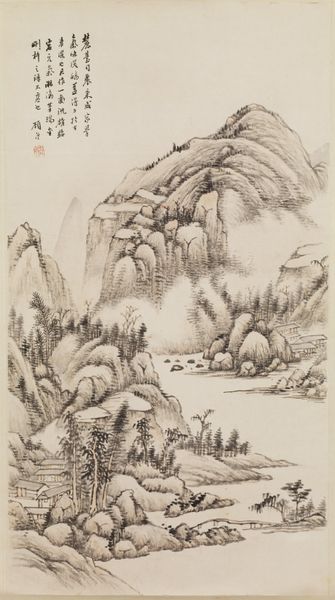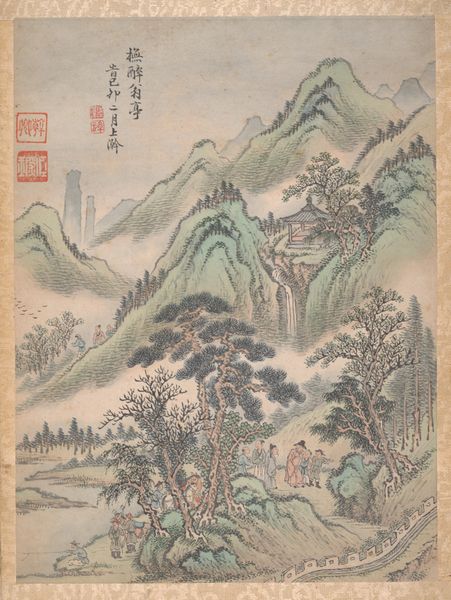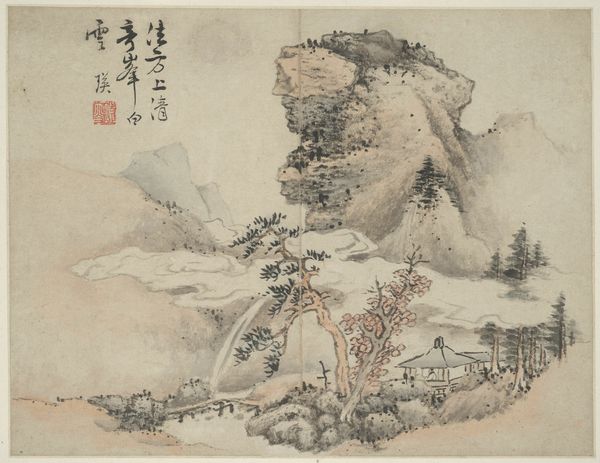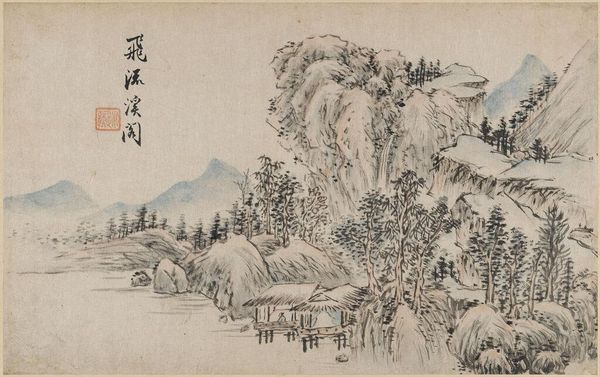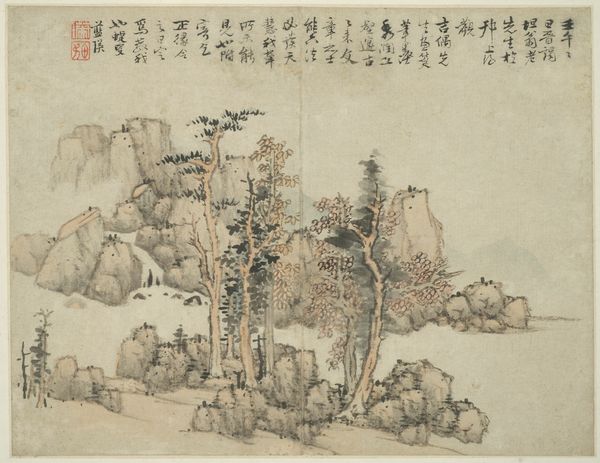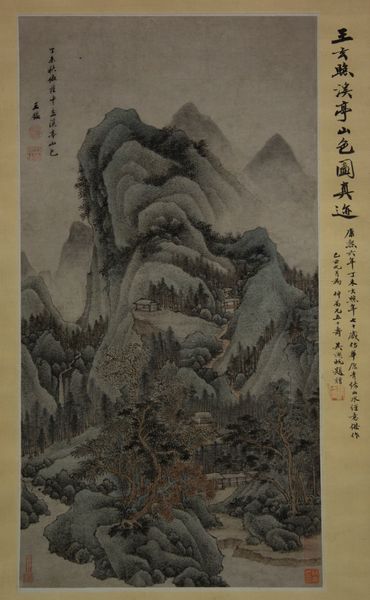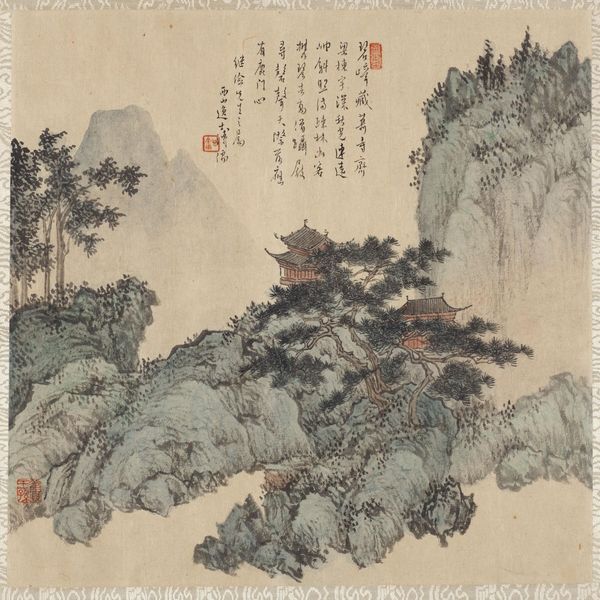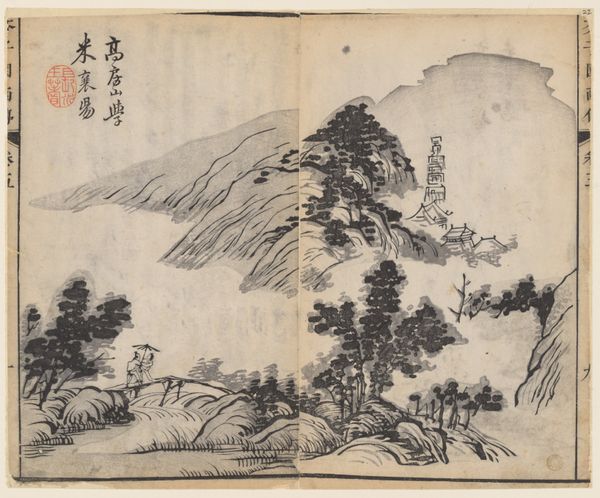
tempera, painting, paper, ink
#
ink painting
#
tempera
#
painting
#
asian-art
#
landscape
#
paper
#
ink
#
calligraphy
Dimensions: 41.2 × 23.7 in.
Copyright: Public Domain
Editor: This is Wang Yuanqi's "Landscape," made with ink and tempera on paper, potentially anywhere from 1644 to 1912. The subdued tones create a sense of serenity, yet the towering mountains also evoke a feeling of awe. What stands out to you when you look at this piece? Curator: The enduring resonance of landscape imagery, especially in Chinese art, speaks to a deep cultural memory. The mountain, for example, is not merely a geological formation, but a symbol laden with significance. Mountains can signify stability, longevity, a connection to the heavens, even serving as a place of refuge or spiritual retreat. What emotions do those cultural symbols evoke in you? Editor: It’s interesting you bring that up because looking at it makes me wonder how viewers at the time understood those mountains, versus now. Curator: Exactly. And it's not just the mountains, but the careful composition, the placement of trees, and the strokes of ink, even the calligraphy, act as signifiers. Each element contributes to a complex visual language understood within its cultural context. The layering of space also leads the eye—is there an emotional journey mirroring this visual journey? Editor: I can see that, as if I'm being invited to wander and contemplate within this space. Are there any specific symbols in this painting that were particularly potent? Curator: The inclusion of small dwellings nestled amongst the mountains and trees often represented the harmony between humans and nature, the ideal of living in accordance with the Dao. That search for balance seems so pertinent today. Editor: That’s such a beautiful concept! I am thinking of balance very differently now, and feeling the deep sense of history through the enduring landscape imagery. Curator: Indeed. It invites us to look at art as a dialogue between past and present. Perhaps visual symbols were yesterday's language, but today we interpret that through history, culture, and even psychology.
Comments
No comments
Be the first to comment and join the conversation on the ultimate creative platform.
